
In early September, we arrived in Lhasa and ended up staying for over a month. My first impression of Lhasa when we were approaching the city was that it appeared bigger than what I thought and from a distance, the Potala Palace stood on a pedestal but looked way smaller than I anticipated. As we drove across the city to get to the other side where our guesthouse was, we saw it from afar and it looked more modern than I imagined with numerous newish looking apartment buildings scattered around the city.

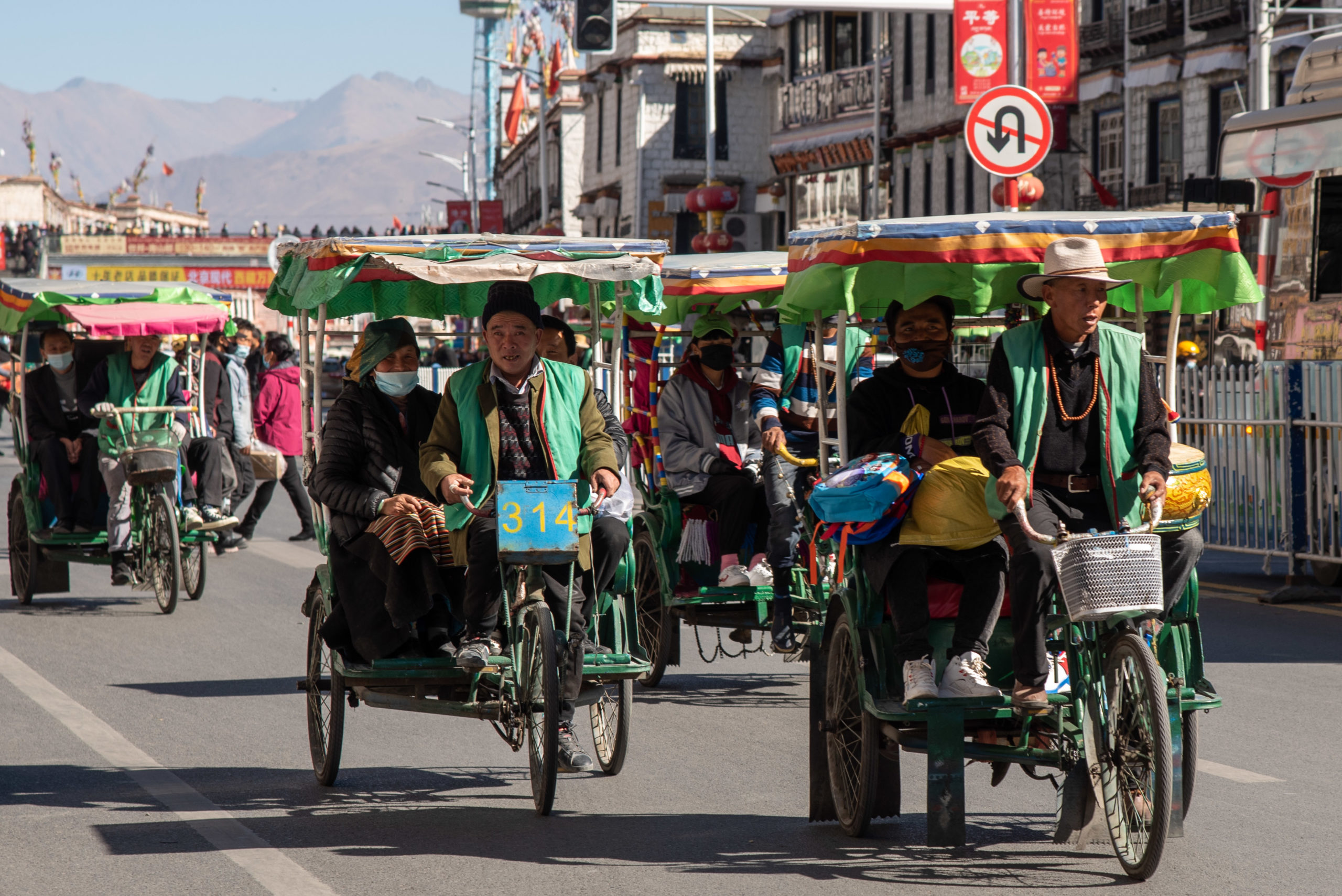
Tibet has the lowest population density among all regions in China with an average of only two people per square kilometre and about 6.5 million people in total (less than Hong Kong). But Lhasa is another story as about 560,000 people live in the city without taking into account of the vast number of tourists. The main road in the city centre is very busy with cars, buses and many colourful cycle rickshaws jostling one another.

On both sides of the road, there are rows and rows of uniform looking Tibetan brick houses of two to three storey high with shops and restaurants on the ground level. It’s interesting to see random butcher shops selling yak meat among restaurants, boutiques and shops selling household products, yak butters and various knick knacks. The sidewalks were often quite crowded.

We did not visit the Potala Palace (布達拉宮) until much later. We spent much time exploring the numerous alleys in the old city surrounding the famous Jokhang Temple (大眧寺) and Barkhor Square (八廓街). On the surface, the open area surrounding the temple looked quite touristy with many souvenir shops, guesthouses and restaurants. There are also some renovated historic government buildings open to visitors. But as we ventured further into the zig zag narrow streets and away from the hustle and bustle, we saw more of how the locals carried on their daily lives. There was often a familiar aroma of yak butter in the air, which permeated the alleyways as it is a staple food in Tibetan households for cooking and tea. Every so often we got a whiff of potato chips (chunky ones) that were fried outside the small shops – a common snack for the locals.


Strolling around in the city on foot is the best way to immerse ourselves in its vibrant and yet laid back atmosphere as we explored the labyrinth of backstreets lined with small restaurants, noodle shops and small shops of all kinds selling clothes, fruits, furniture, religious ceremonial supplies, etc.



One is required to show identity card at checkpoints to enter many popular spots in Lhasa such as the Potala Palace (including the Potala Palace Square), Barkhor Square (八廓街) and Jokhang Temple (大眧寺). There is always a constant stream of locals and circling the perimeter of Jokhang Temple as a form of prayer. They complete their prayer (the number of circles) in odd number (minimum three rounds).
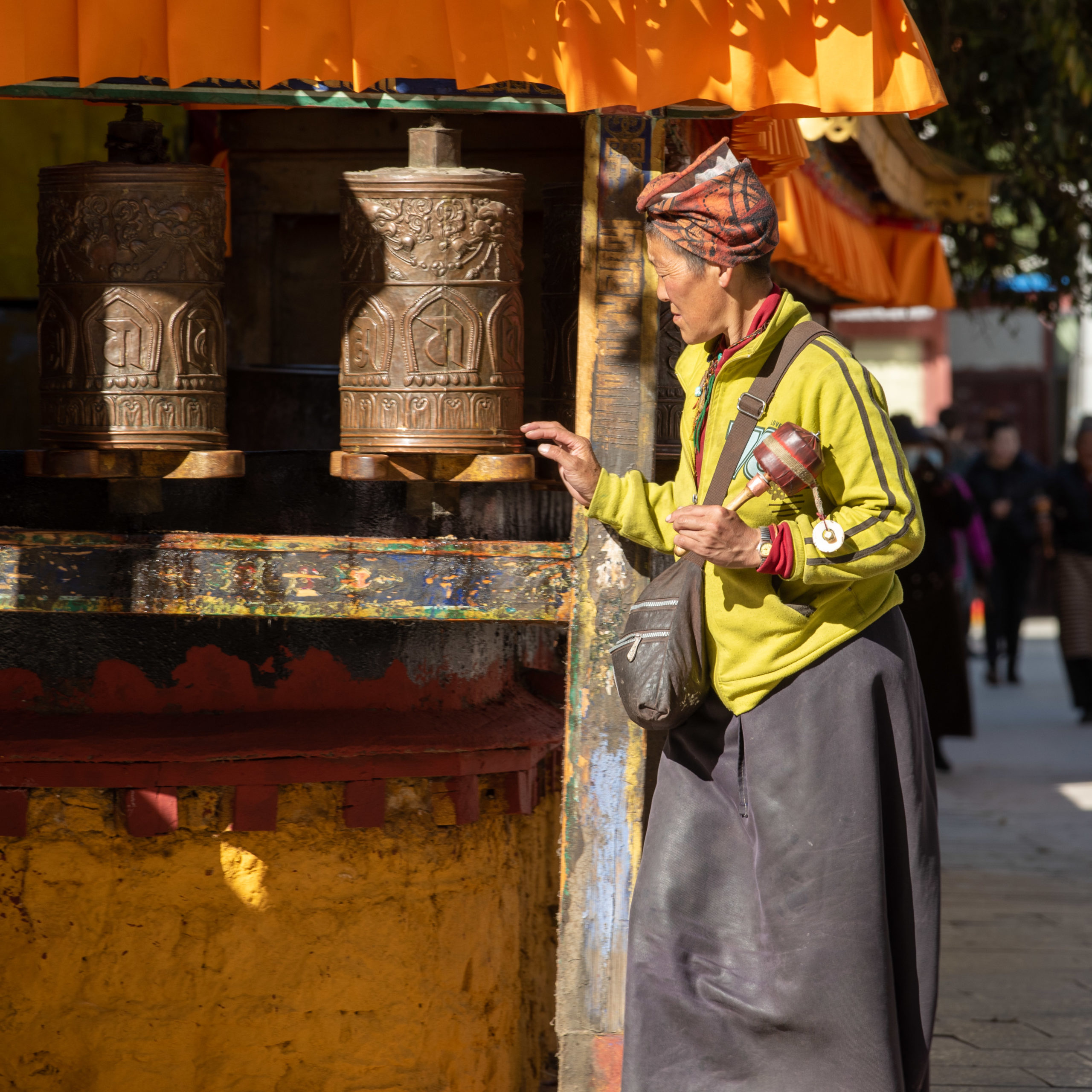
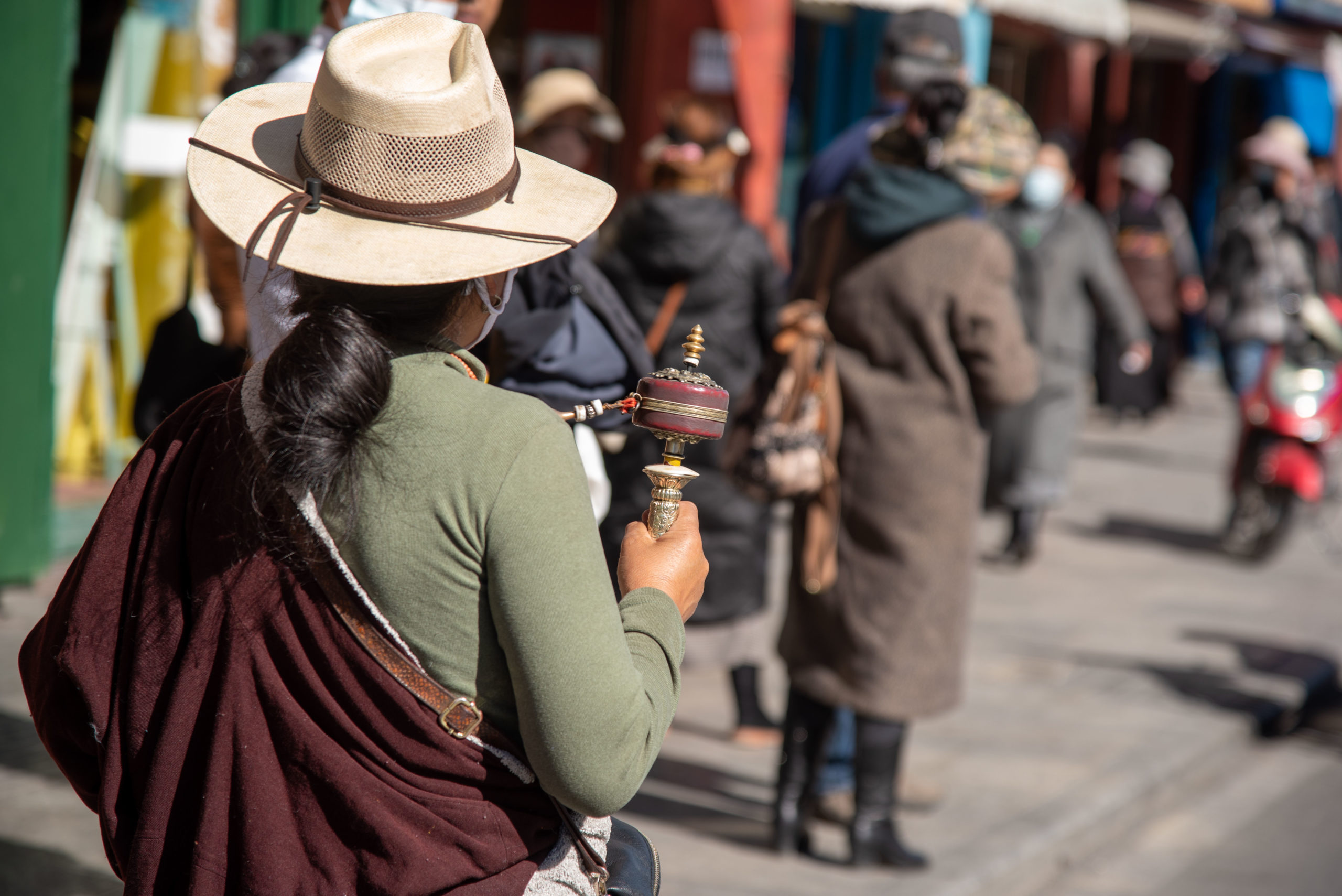


We saw tourists (mostly females) dressed in colourful Tibetan costumes and posed at the designated popular spots – standing against a certain doorway or in front of the famous Makye Ame Restaurant where legend has it that the 6th Dalai Lama used to meet his lover (瑪吉阿米餐吧). This sort of photography is very popular in China. There are a number of such shops in the Barkhor Square where they offer integrated services of costumes, makeup and photography. To us, it seems like the most impersonal thing to do as everyone has the same makeup, the same pose and expression against similar backgrounds and sceneries that we can hardly differentiate one from another – as if they were copied from the same mould.
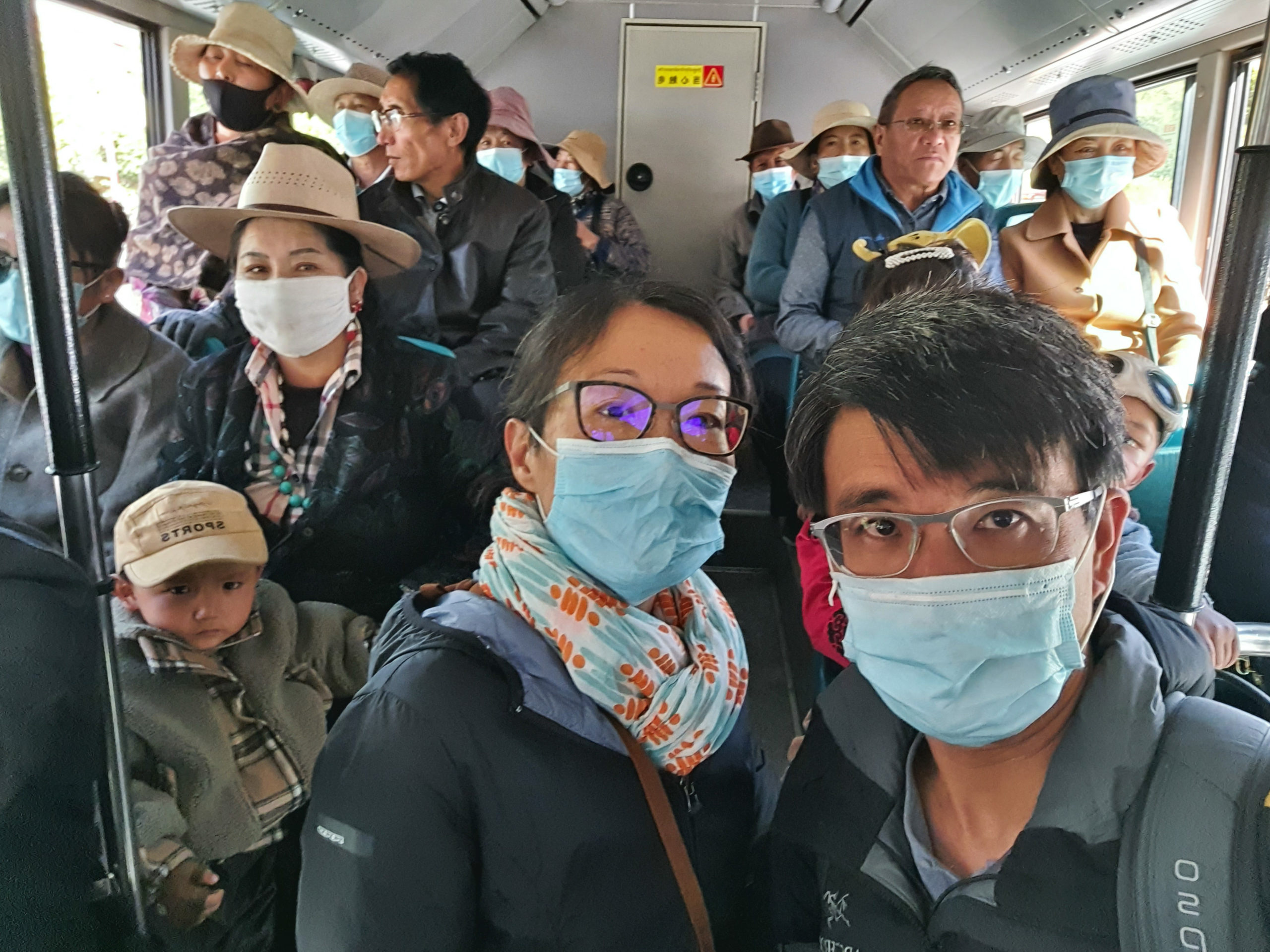
Soon we got into a nice routine – breakfast in our room (always oatmeal and fruit and shared with our lovebird Lavender who simply loves it) followed by play time with our furry children; then we headed to the city centre by bus (RMB1 per person) to have lunch; a leisure stroll followed by teatime in Tibetan teahouses or coffee shops where we read or I wrote the travelogues; then we either walked or took the bus back to our guesthouse to cook dinner; more playtime with our furry kids and movie time before going to bed. We treasured our routine as it gave us a sense of constancy amidst our continuous moving from place to place.

We sometimes went to the eastern part of Lhasa to have Cantonese lunch at a rather good restaurant well hidden in the residential area and we had dim sum and then walked back to the city centre. There is another Cantonese restaurant in the city centre and it soon became our favourite lunch place – we loved its fried vermicelli (炒米粉) and clay pot rice (煲仔飯). We were heartbroken when we saw that the restaurant had changed into a clothing shop after our Ngari trip. We thought it closed down but later the dim sum restaurant owner told us – that restaurant is only in business for about six months a year and closes when the peak season ends and sub-rents it out.
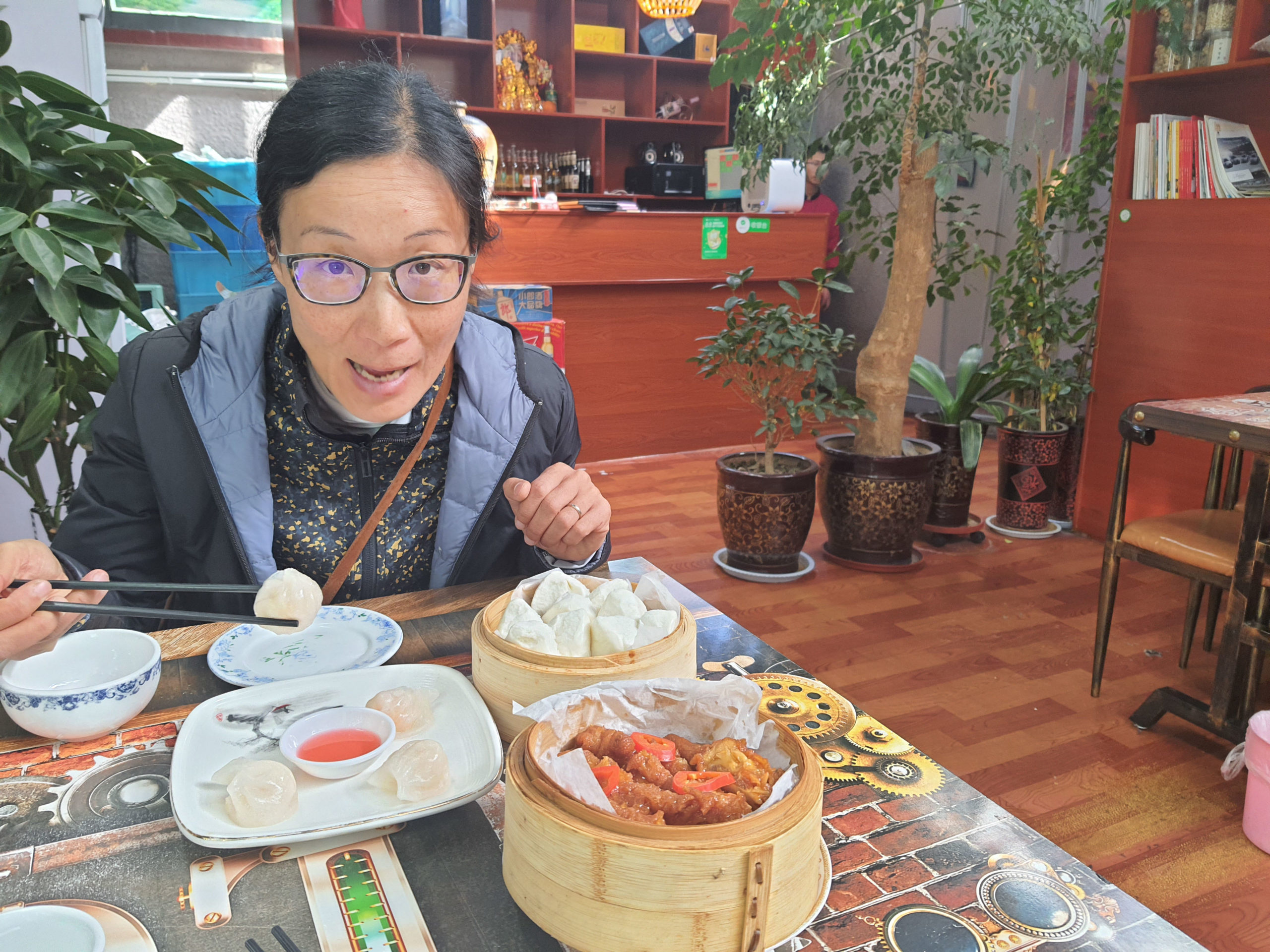
We try to maintain a healthy diet and always prepare our own breakfast and simple dinner at the guesthouse. We stick to plant-based cooking which means no meat and dairy when I cook. I also cut out oil as much as possible. It does not mean that it is tasteless and bland. I just get more creative with herbs and ingredients that I did not use before such as legumes. We occasionally had meat when eating out. So in a way, our lunches outside are the main source of oil intake.
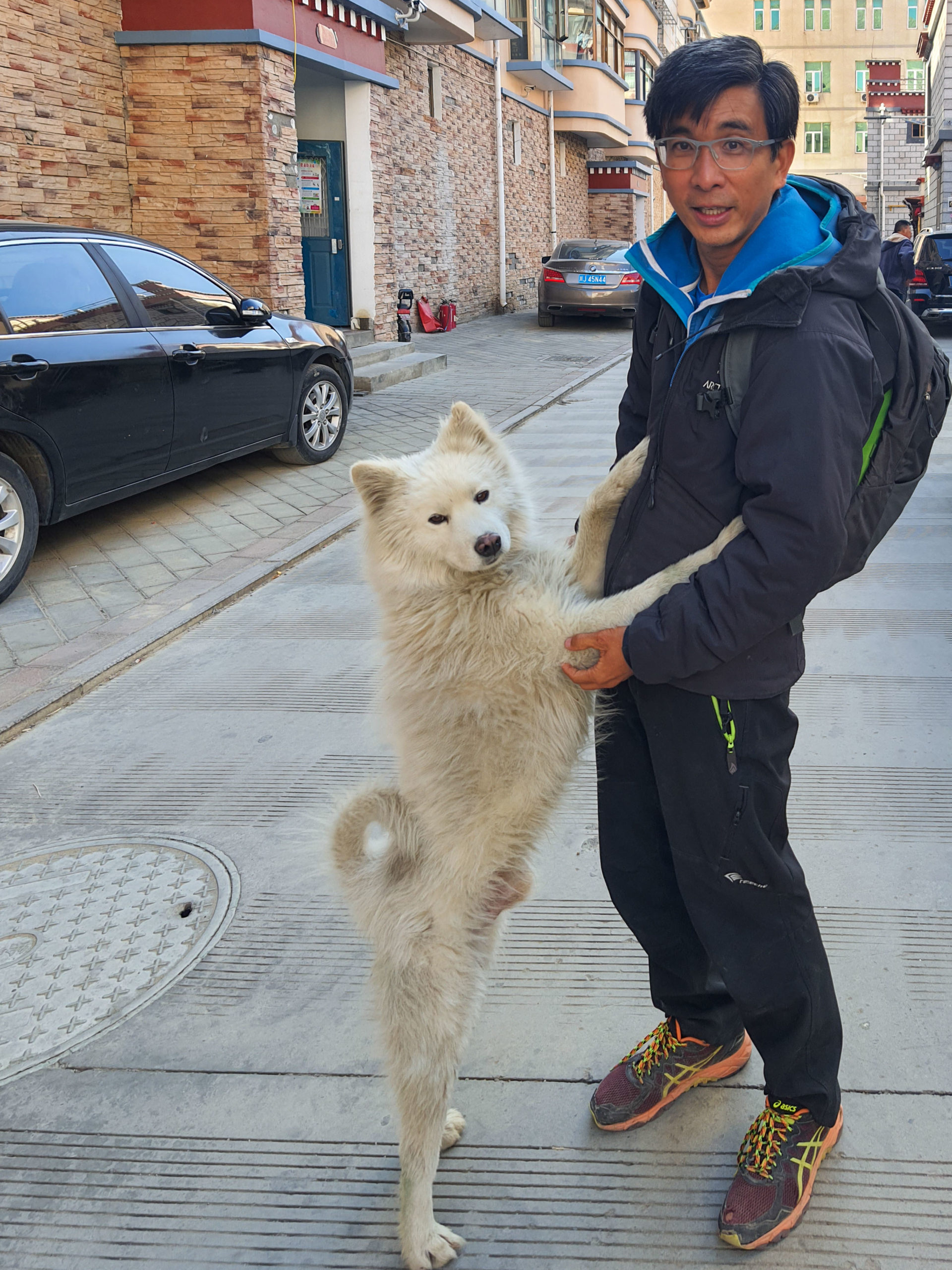

We treasure little moments or treats of joy and contentment in life – be it over a cup of coffee or Tibetan sweet tea; a delicious dim sum lunch; taking in the colourful array of fresh fruits and vegetables in the market; or just a brief encounter of an energetic and friendly little dog that could not stop wagging its tail. And we got plenty of that in Lhasa.

Due to the high altitude, pressure cooker is a must have in Tibet to cook rice and noodles. The dim sum restaurant owner told us that they cannot make certain dim sums like shrimp dumplings (蝦餃) as they are unable to properly prepare the dough due to the lower boiling point. Hence, the shrimp dumplings are prepared elsewhere and delivered to Lhasa.

The guesthouse we stayed at is about two kilometres away from the centre inside a quiet residential complex. It is so well hidden in one of the narrow alleys that it took us over half an hour to find it when we first arrived. The guesthouse has two floors and we stayed in one of the two only en-suite rooms. All the other rooms are shared and rented per bed basis and need to share bathrooms. Our room has huge windows, which looks into the front yard. We loved our quiet room as it felt homey with its basic but comfortable furniture.

The guesthouse is run by a young man Yexiao (葉宵) from the eastern coastal province Zhejiang (浙江) and has a lively atmosphere as all the guests are relatively young. Some of them rent long-term as they work in travel photography and videography, which is in high demand in the peak season.


We did not find our guesthouse via the usual accommodation app C-trip. Instead, Kin asked our young Cantonese friend Huanglicheng (黃利成) who lives in Lhasa if he has any connections as we were hoping to rent for a few weeks. Huang immediately contacted his friend who owns a guesthouse and through him, Kin was hooked up with a network of guesthouse owners. Quite a number of them contacted Kin and eventually we picked Yexiao’s guesthouse for the spacious room at a very reasonable price. As the Chinese proverb aptly says – always rely on friends when you are away from home. Our travelling so far has certainly been made easier and safer with the help of many friends and people we met on the road.

The first two weeks in Lhasa, it was mostly sunny and hot (around 25 degrees Celsius) during the day. Just wearing a cotton top was enough. But we always brought a jacket and scarf with us as once the sun set, temperature dropped dramatically by 10 degrees or more. It also rained heavily consecutively at night and got quite cold. But the rain stopped after the first week and it was sunny the rest of the time we were there.

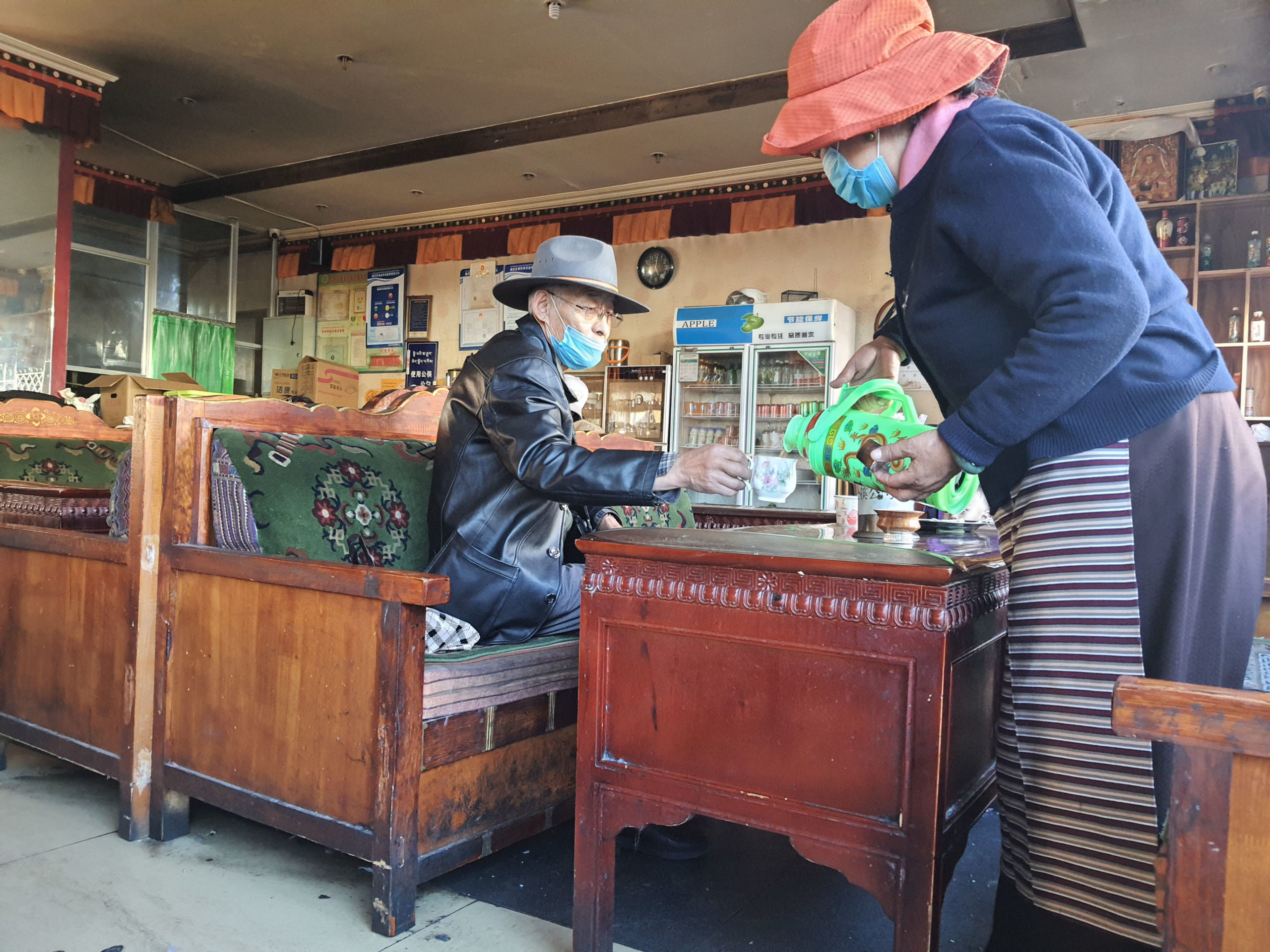
Around mid September, we took a four-day short trip with two friends Harmony and Catherine. The morning after we returned, I saw a young man in the front yard whom I had not met before. He seemed rather shy and we said hello to each other. I saw him again the next day and he asked if we were from Guangdong and we immediately switched to Cantonese channel. His name is A Feng (阿豐) and he used to run a very popular guesthouse in Lhasa. He had sold the business and now he only stays in Lhasa whenever he has to take tourists on private tours.


A Feng (阿豐) is very kind and gentle and he is a fantastic chef who had worked in five star hotels and big restaurants. The next two days, we spent a lot of time together and he cooked lunches and a sumptuous dinner. He took us to the wet market, which is oddly located very near the Potala Palace Square. We had so much fun as he taught us how to select various things like yams and sweet potatoes. Kin and I love going to local markets wherever we travel and exploring it with a chef is even better. Everything (especially food) in general is more expensive in Tibet as most things are delivered over long distances.
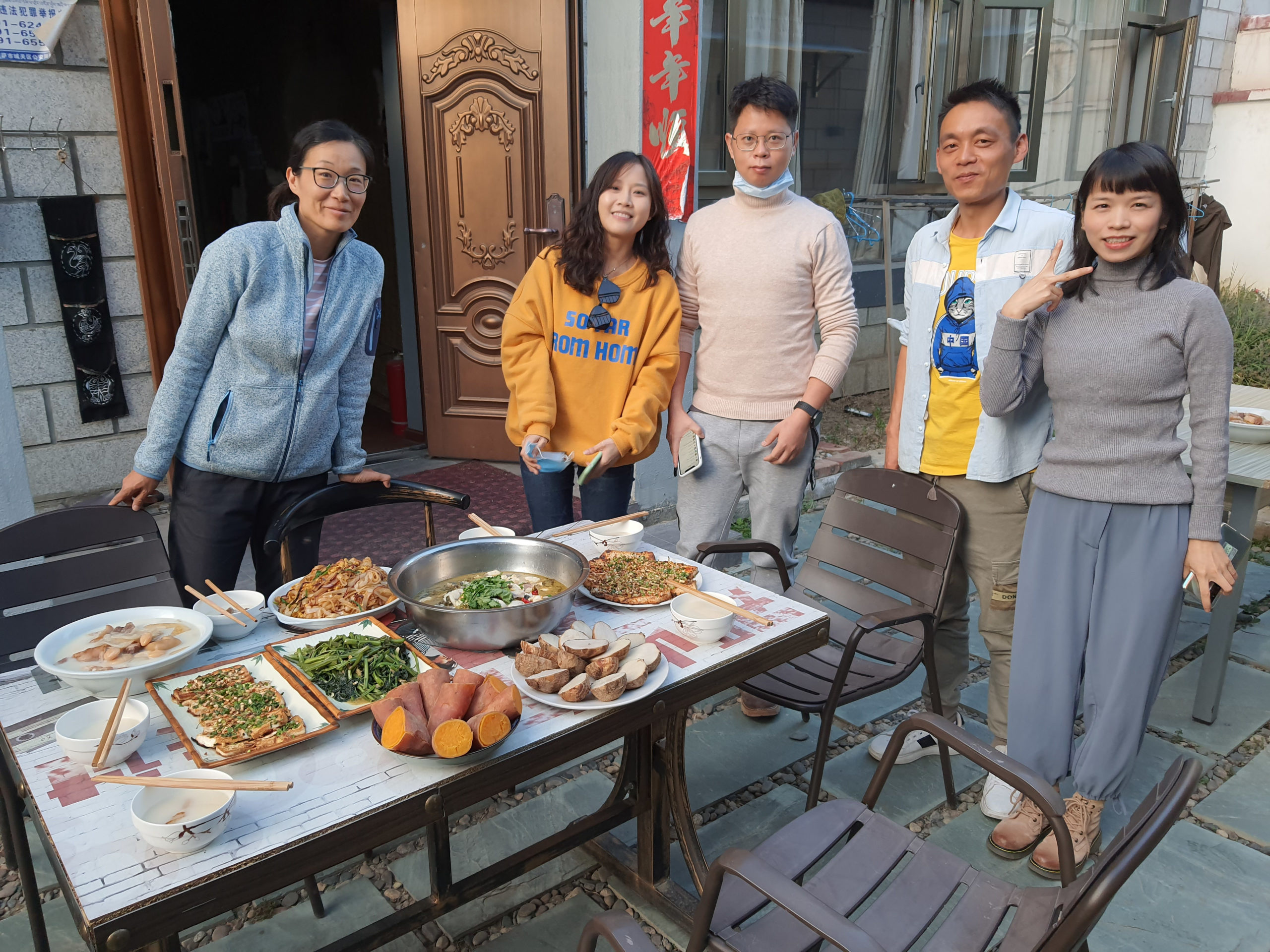

We had a lovely time with A Feng and exchanged our personal stories and experiences. He was very curious about the current affairs happening outside China and it was a wonderful opportunity for us to hear his take on various topics despite our different backgrounds. A Feng is smart and yet he is humble and kept telling us how he appreciated talking to us and learning so much from us. We kept in contact during our Ngari trip as he took the young people on a two-week private tour to Ngari as well. But he already left Lhasa by the time we returned to the city. We hope to see him again when we are in Guangdong again.

Kin’s colleague Feng Ling (鳳玲) and her husband did a three-week driving trip with their friends to drive from Guangzhou to Xinjiang. Their final destination was Lhasa where they booked a delivery service to return their car back to Guangzhou. More and more people use this kind of service to make the best of their holidays and they can fly home without the need to drive back. It was wonderful to see them and we spent almost a day together. We walked around the old city, had sweet tea and our happy time ended with a delicious Tibetan stone pot chicken (石鍋雞) dinner. The hotpot restaurant is quite famous and we got there before 6pm and just in time to get one of the last tables. Before long, we saw a queue outside.

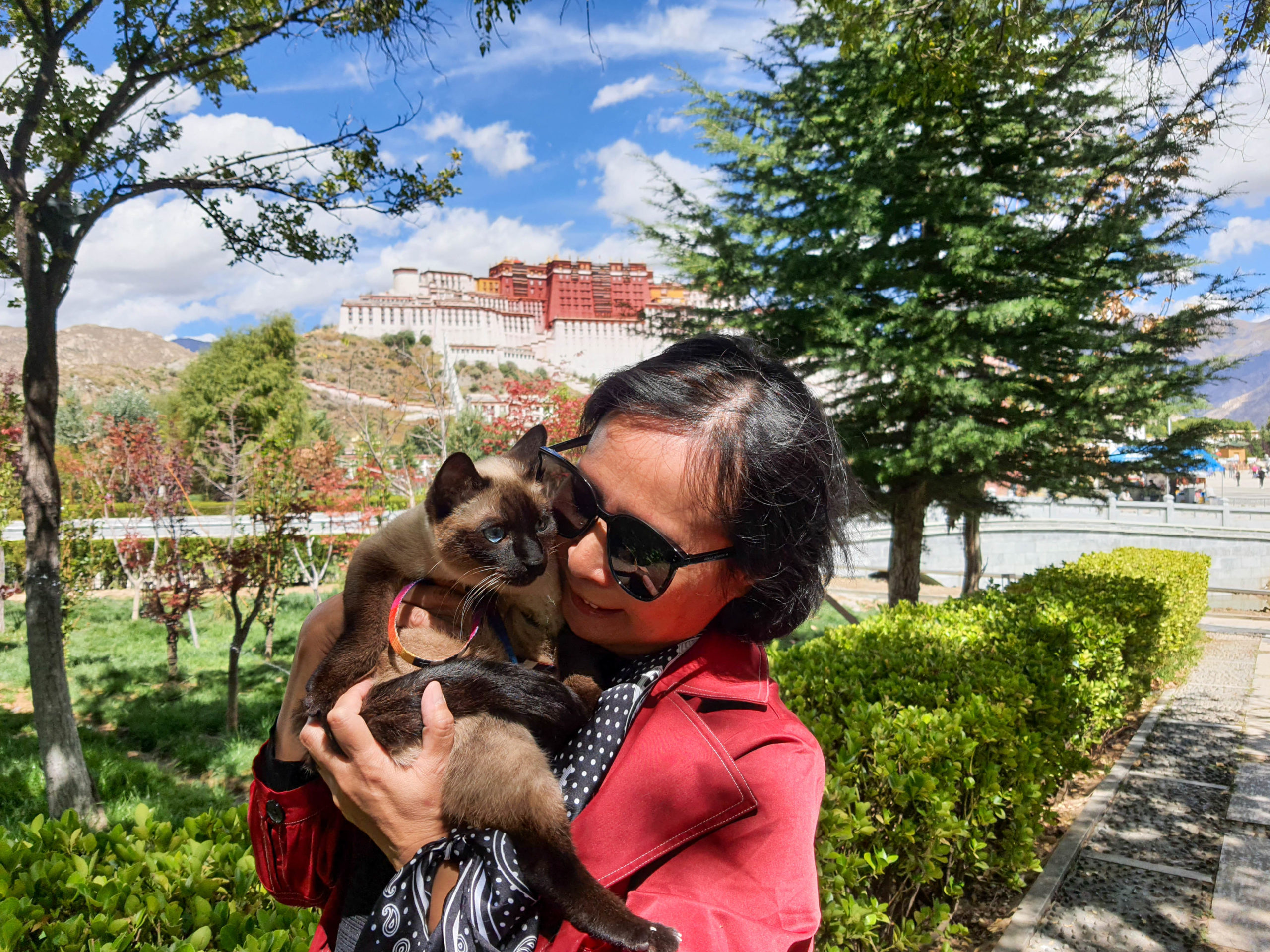
We also took our van to the Iveco customer service shop to fix our rear window. We had a minor accident a while ago before we entered Tibet. We got into a narrow street and when Kin tried to reverse, he did not see the lamppost. It was too late by the time I warned him. Luckily there was no serious damage except the glass of the left rear window was shattered. The owner of the guesthouse we stayed recommended a repair shop nearby but unfortunately the shop was unable to order the glass. We taped over the damaged window and decided to fix it when we got to Lhasa.
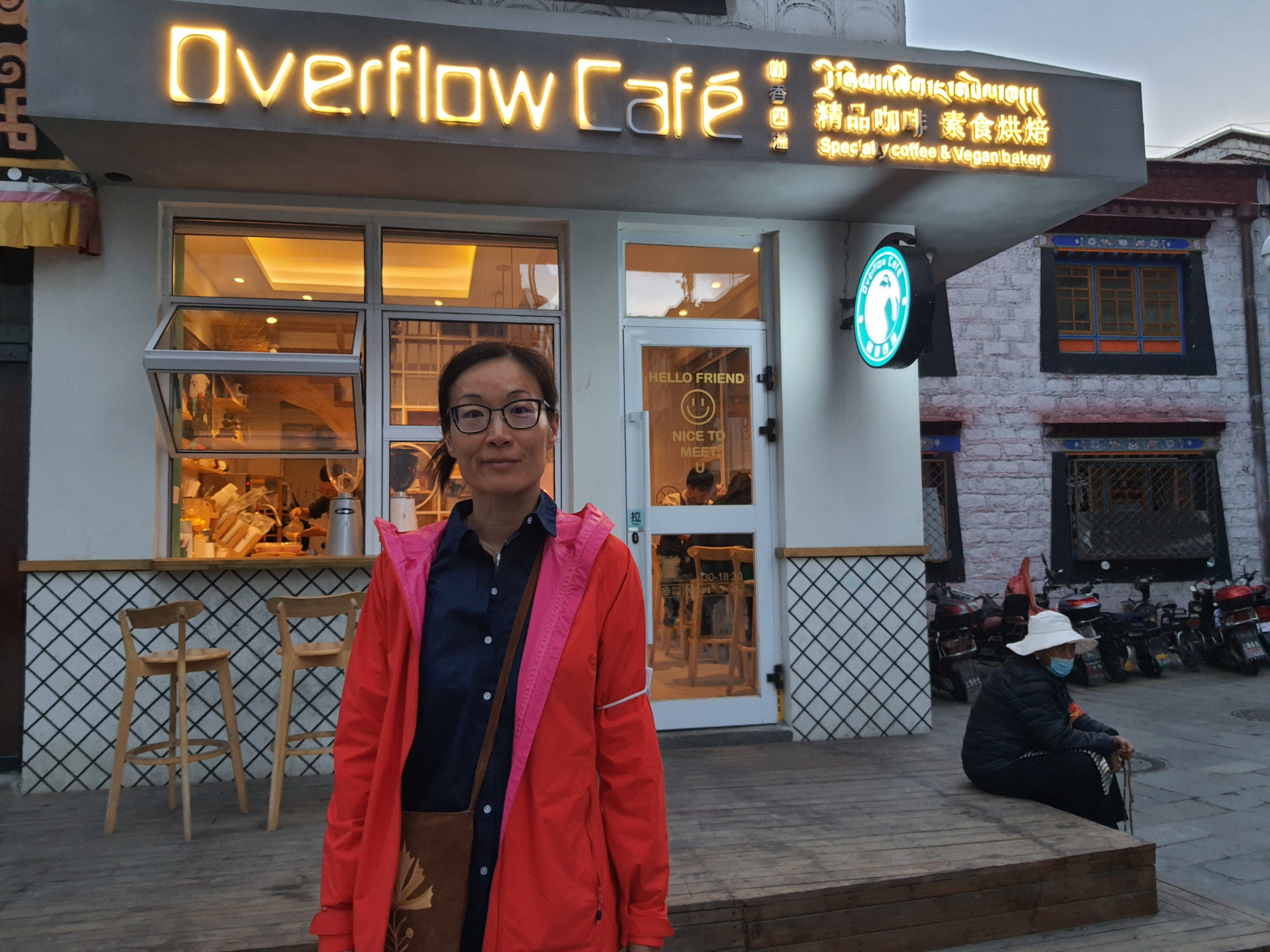
Our car dealer in Guangzhou, Mr. Chen has been very helpful ever since we bought our van. He is our go-to person for any issues with our van including insurance renewal and what to do when we have technical problems and accidents. He helped us a lot – he estimated the repair cost and suggested that a local repair shop could fix such a minor damage and only go to the CS shop if the local one could not do it. He also gave us the Iveco hotline number.


When we found out the window could not be fixed locally, Kin immediately contacted Iveco (after he verified the number via internet to play safe). We were amazed by how efficient their service was – the new glass panel was ordered within a day and Kin paid via Wechat (RMB200 for the glass panel, about RMB200 for labour plus RMB100 for delivery) and was told that the glass would be delivered from Nanjing (南京) to Lhasa around seven days.

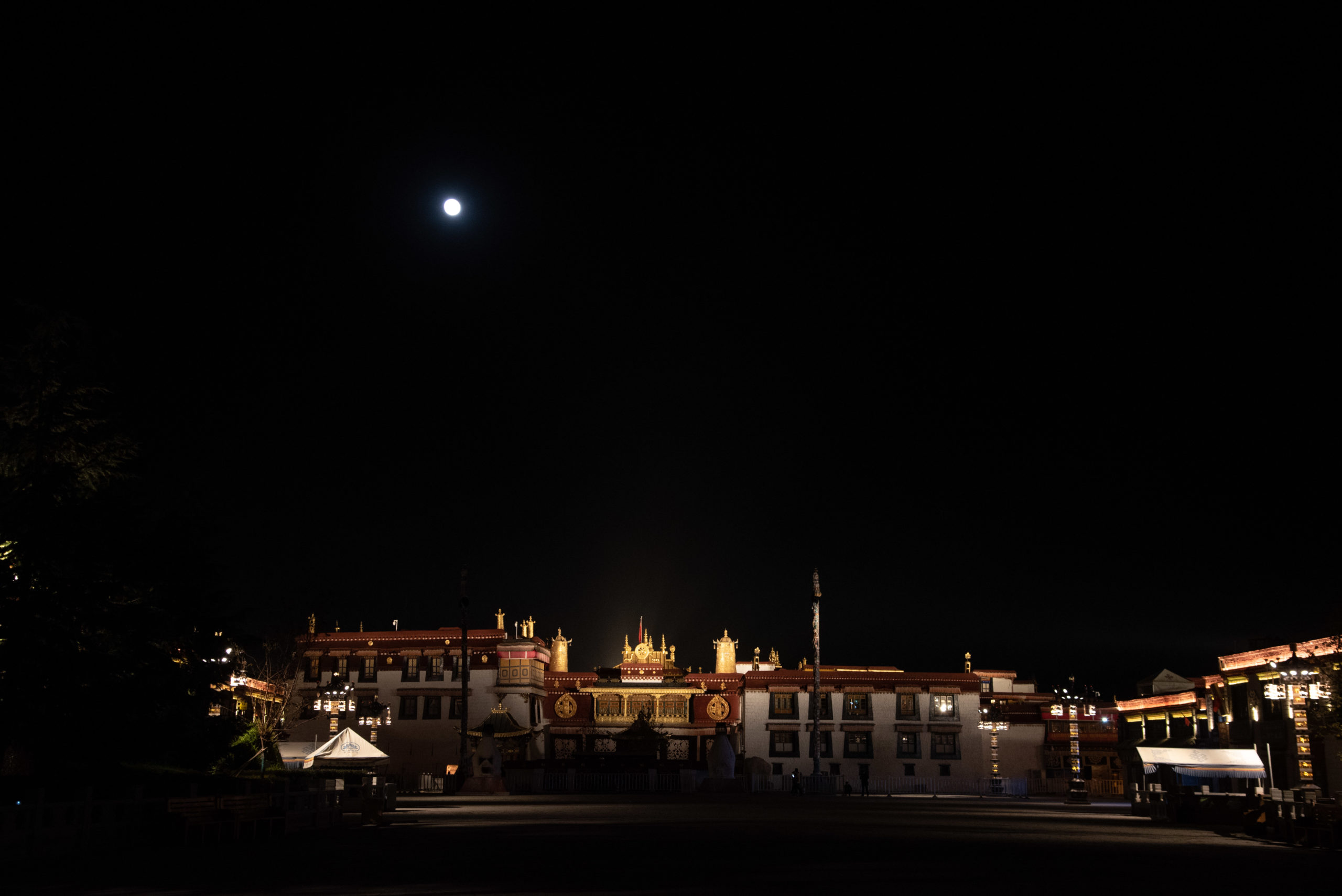

Kin told the CS shop that we would not arrive in Lhasa at least a few weeks later as we were travelling at such a slow speed. The funny thing was that since we had a known address in Lhasa, we started sending numerous packages we ordered on-line to the CS shop and we did not collect them until about six weeks later. I often joked with Kin that the CS shop must be wondering if we would ever come to pick up the goods. We have been very happy with our Iveco van and from this minor incident, we learned how incredibly efficient things can be in China.

After being were well rested from our one-month Ngari (阿里) trip, we finally visited the Potala Palace (布達拉宮). By then, it was free of charge as all entrance fees of tourist spots were waived from mid October. We still had to book on-line to fix the visit time slot. We had a quick lunch nearby and walked to the front entrance where we presented our booking QR codes. We saw the Treasure House on the ground level where many religious artefacts were on display. After about 15 minutes, the caretaker told us to leave to make way for the next batch of tourists.
Then we climbed the mighty steps that seemed never-ending to get to the unassuming portico into the Potala Palace. Even though we had well adjusted to high altitude, it was still daunting to climb those stairs. I could not imagine doing it within a few days upon arriving Lhasa. I saw a young woman slumped against her boyfriend’s leg with her face all pale and she was clearly suffering. Even the locals were breathless by the time they reached the first level of the palace. We definitely made a smart choice not to visit it so hastily.

The modern Potala Palace was built by the 5th Dalai Lama. It was the seat of government and the winter palace from 1649 to 1959 before being turned into a museum. It is named after Mount Potalaka and its interior took 45 years to complete. There are 13 storeys with over 1,000 rooms but only a limited number of them on the second and third storeys are open to visitors.
As we entered the first level of Potala Palace, we continued to climb more winding staircase to reach the central part, which is called the “red palace” for its crimson exterior. We got to the principal hall and a series of rooms of the past Dalai Lamas. Then we passed the richly decorated golden shrines of the Dalai Lamas and various chapels until we walked back down to the other side of the palace. Tibetan Buddhism focuses on the circle of life and also hell to remind people to be good and conduct good deeds. There is a small chapel devoted to hell in which all the paintings and carvings depict the image of hell.


As it had already passed the peak season, there were more locals paying respects to the Dalai Lamas than tourists. Although I am not religious, I was moved by the imposing ambience inside the palace and I felt greatly exhilarated when I emerged from the dark interior of the chapels and rooms to see the whole of Lhasa at my feet with clear blue sky and gentle breeze.

We saw our friend Huanglicheng (黃利成) and his wife again after we returned from the Ngari trip. We visited the former Dalai Lama’s summer residence Norbulingka (羅布林卡). It is now the back garden of Lhasa and a favourite place for the locals to picnic and spend a leisurely afternoon. Afterwards, we took them to a Nepalese restaurant that we loved and they were surprised by how tasty the food was.
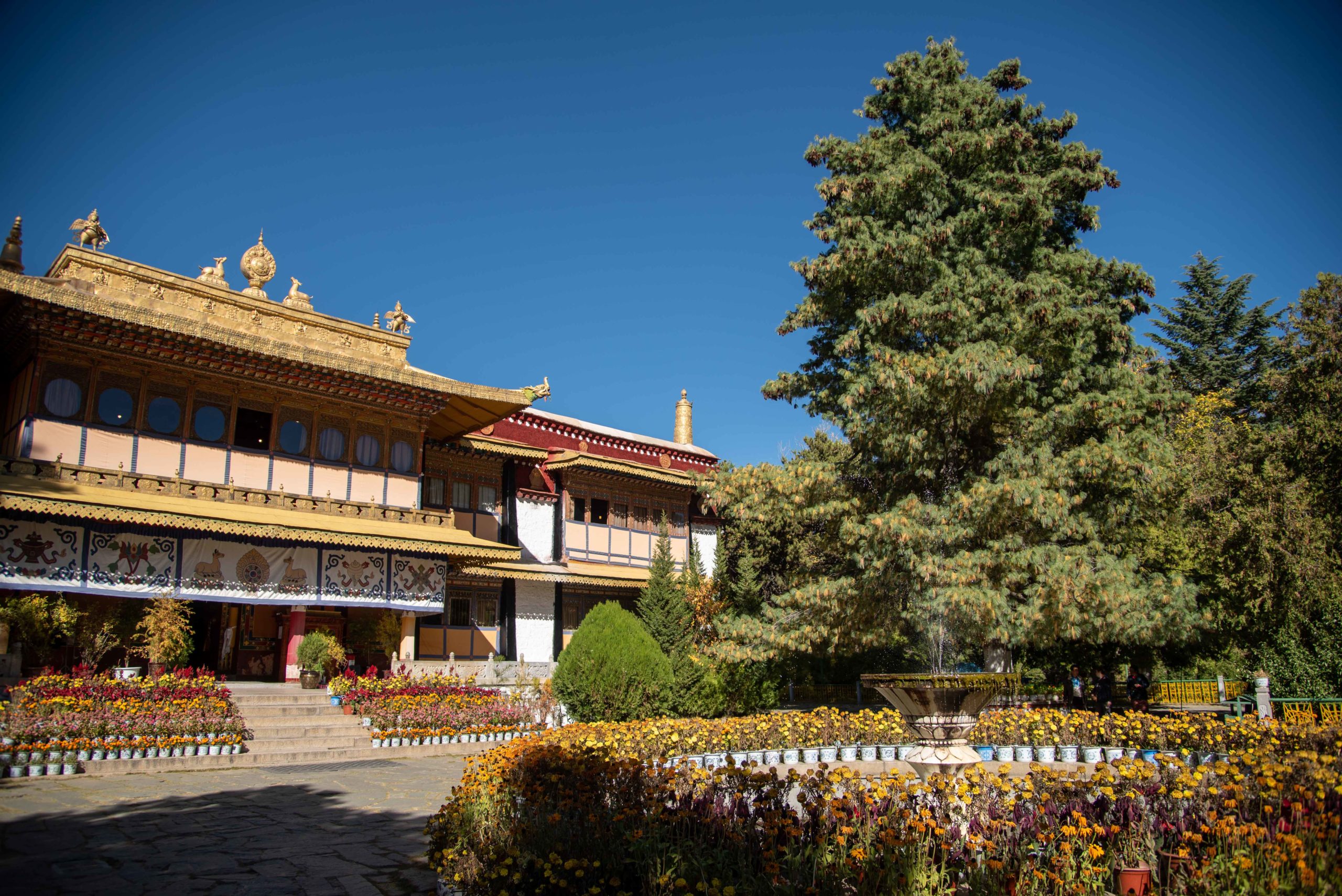
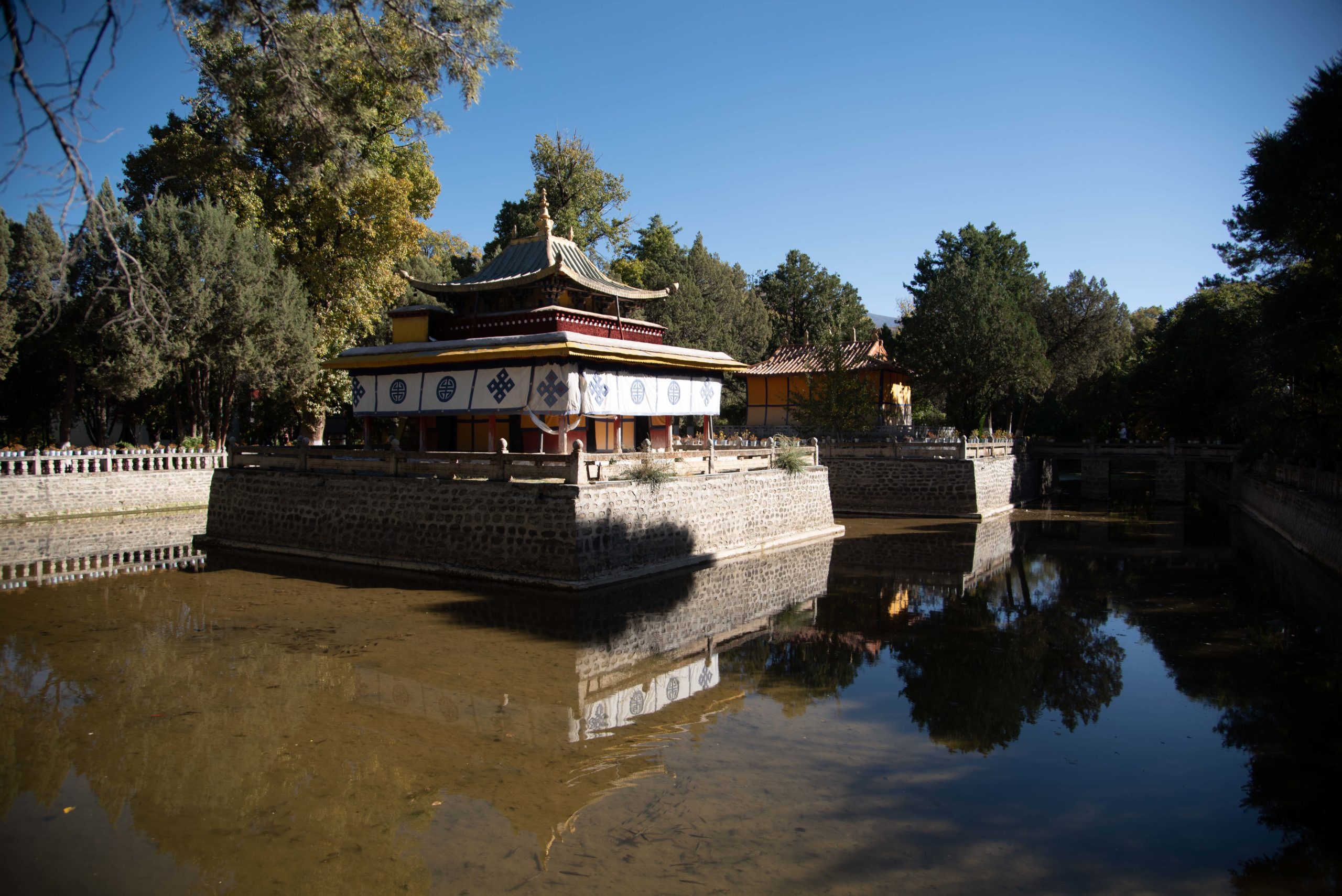
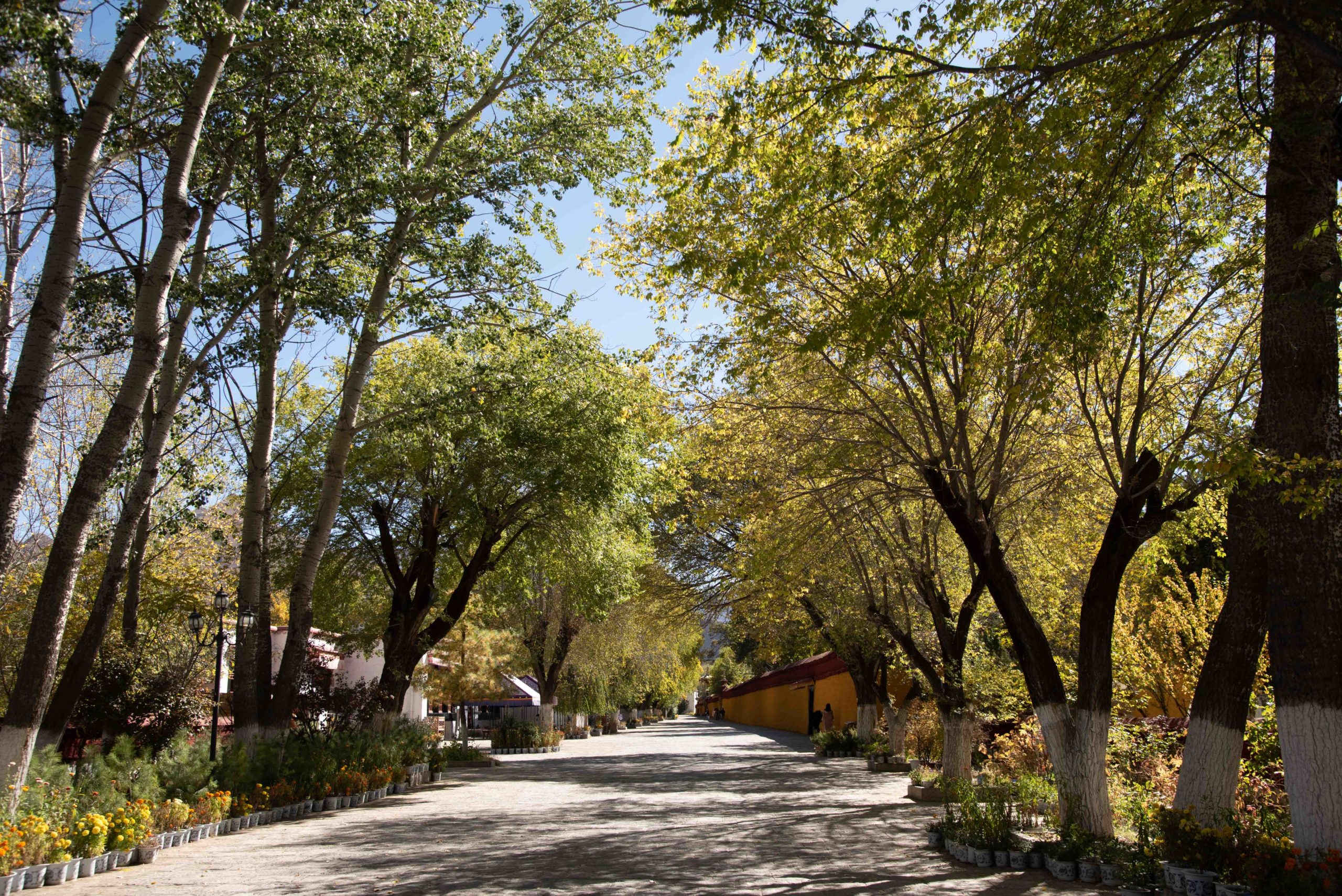


The following Saturday, Huang invited us to have hotpot at their home. Their apartment is on the outskirt of the city and it is an unfurnished apartment with no flooring and only the kitchen and bathroom are fitted out. It is common in China and is called Qingshuifang (清水房) which means bare unit. It is very spacious with three rooms and they share it with another friend.



Huang took us to the wholesale fresh produce market to buy all the ingredients and he also made a tasty soup his mother taught him. We ended up having a hotpot marathon from 3pm till late evening and only took a short break for our stomachs to settle. We ate so much and were so happy to have such a cosy dinner gathering with friends.
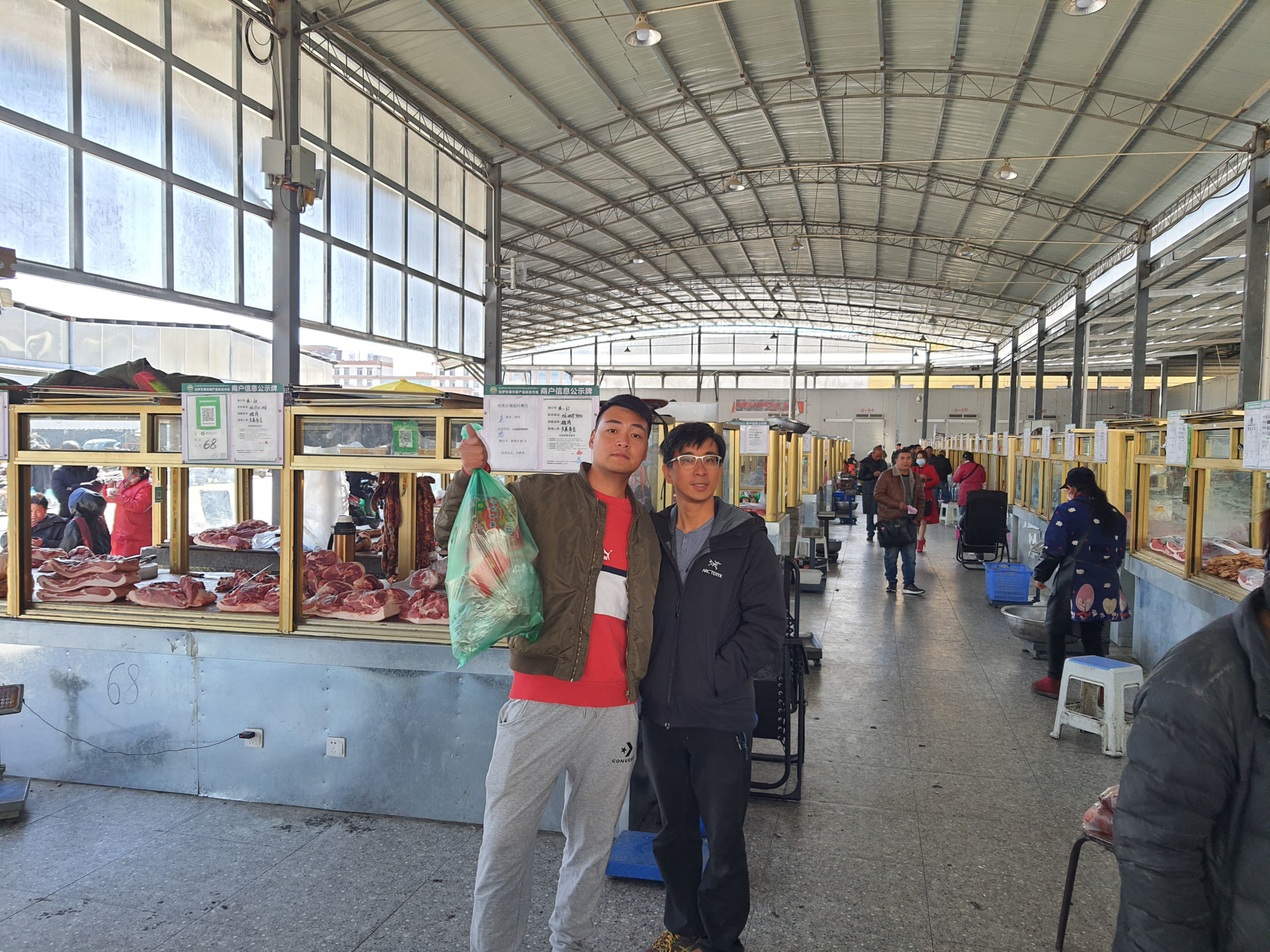
As winter was approaching, we finally decided to leave Lhasa. On the morning of 12 November, Kin took the heavy luggage to the van first and drove nearer to our guesthouse. Just when I was carrying the last two bags to our van, I noticed it looked different from a distance. When I got to the side of the van, I saw the back side door was bent inward with an angular hole gaping at me and Kin was nowhere in sight. When he appeared (after checking the truck he bumped into was fine with hardly a scratch), I asked him what happened even though I sort of guessed that he must had bumped into something when he tried to turn round the corner as the passageways inside the complex were pretty narrow and packed with vehicles.

I was very calm about the whole incident (secretly I was quite happy to remain where we were as I had developed quite an attachment to Lhasa) while Kin took pictures of the damage and followed up with Mr. Chen, our car dealer and helpful friend. I called the guesthouse owner him and said that we needed to stay one more day. I asked him if he knows any car service shop and he gave me a contact number. Kin also got another contact from our friend Huang and we compared quotes.
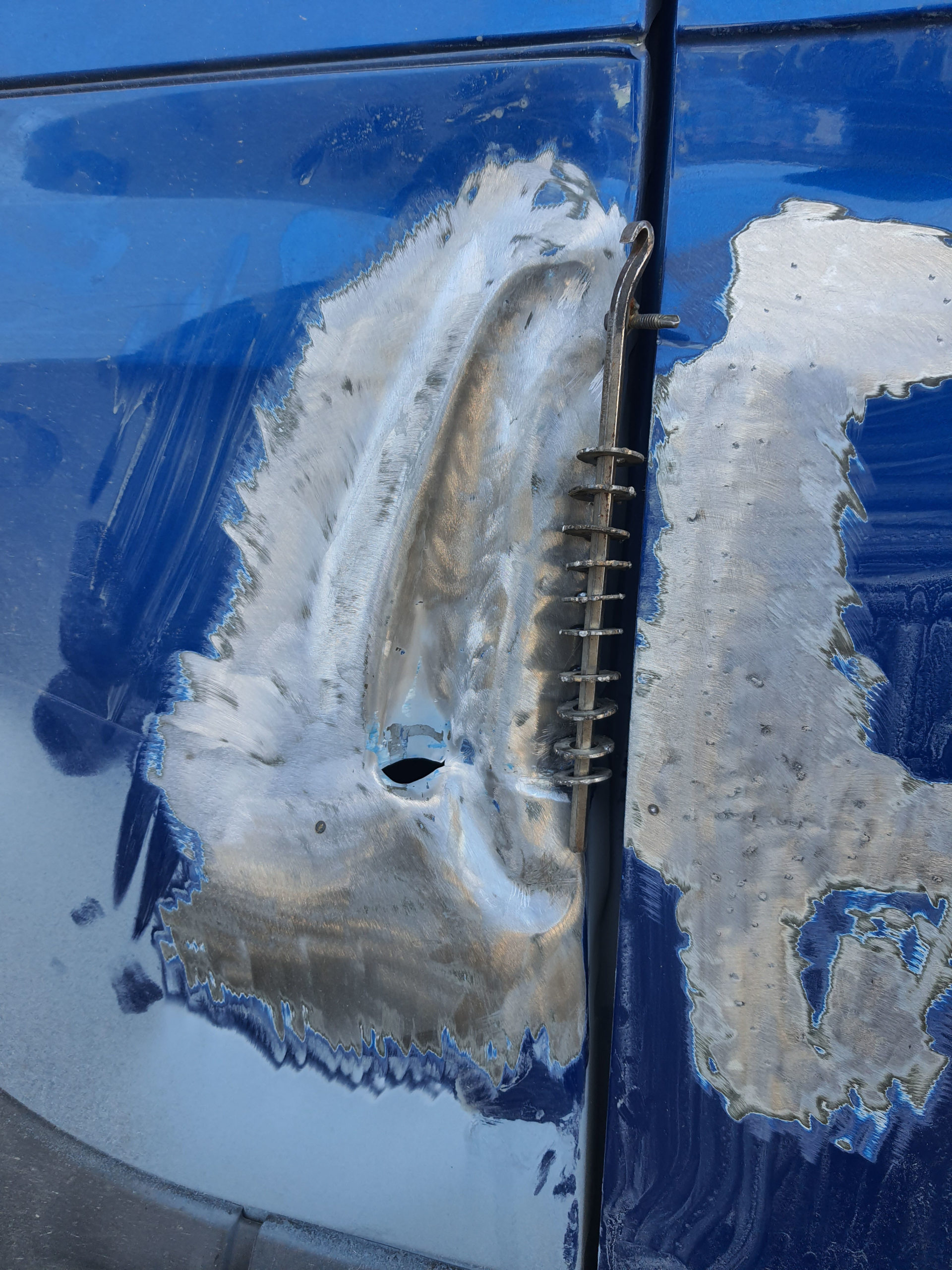
Within two hours, repair was underway at the service shop recommended by Huang’s Tibetan friend. We stayed at the shop for about an hour and were mesmerized by how the guy skillfully pumped the concaved metal back to the original shape inch by inch. We returned the following afternoon and found our van in perfect form. We could not see any traces of what happened to our poor van (and it only cost us RMB1400). Yet again, it shows how crucially important to have the generous support of friends in times of need.

We always think on the positive side and consider these minor incidents as good opportunities for us to learn how to solve problems and be flexible. We also learn more about how things work in various places. So we were all set and finally waved sad goodbye to Lhasa and drove northward and headed towards Qinghai (青海).

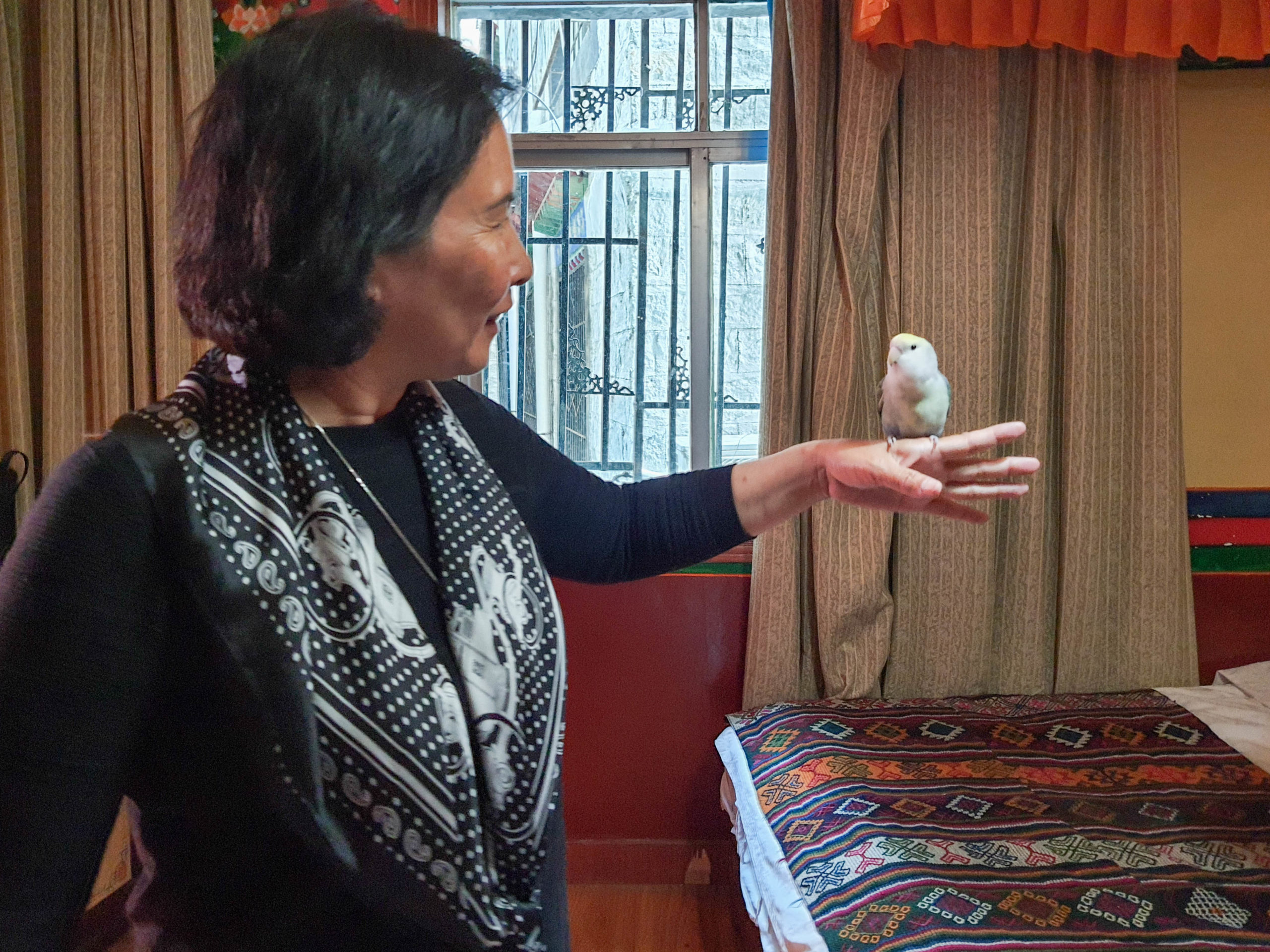
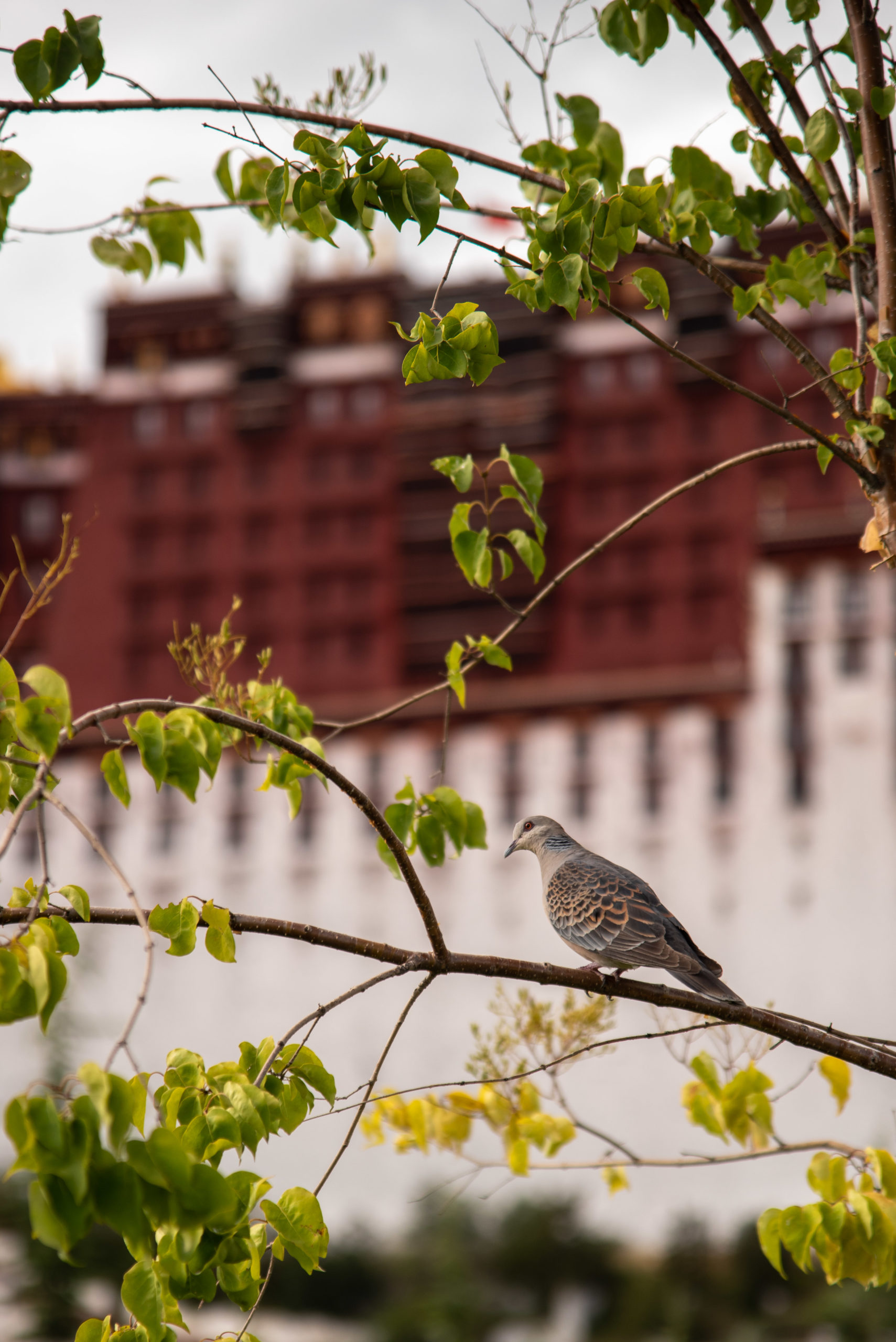
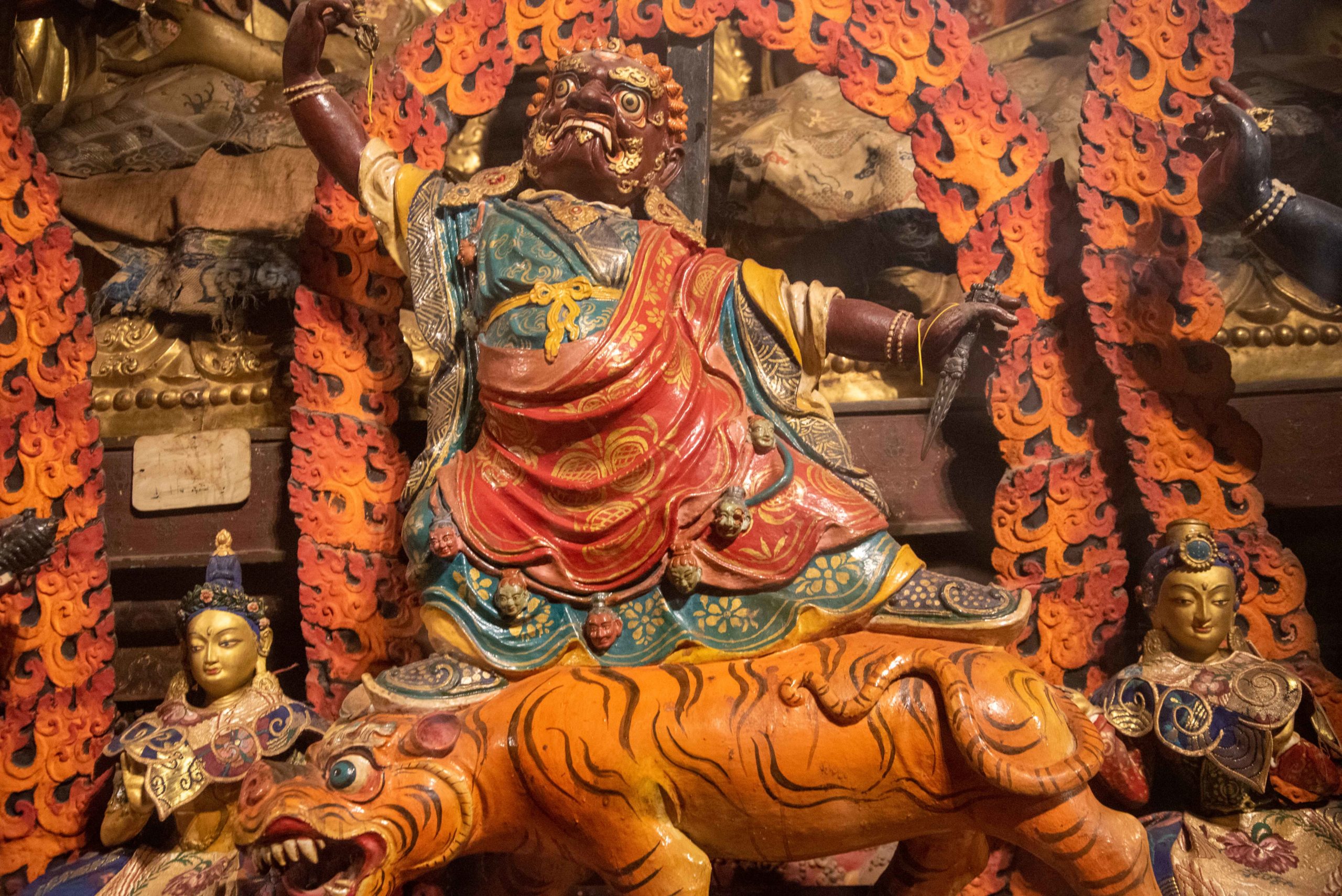
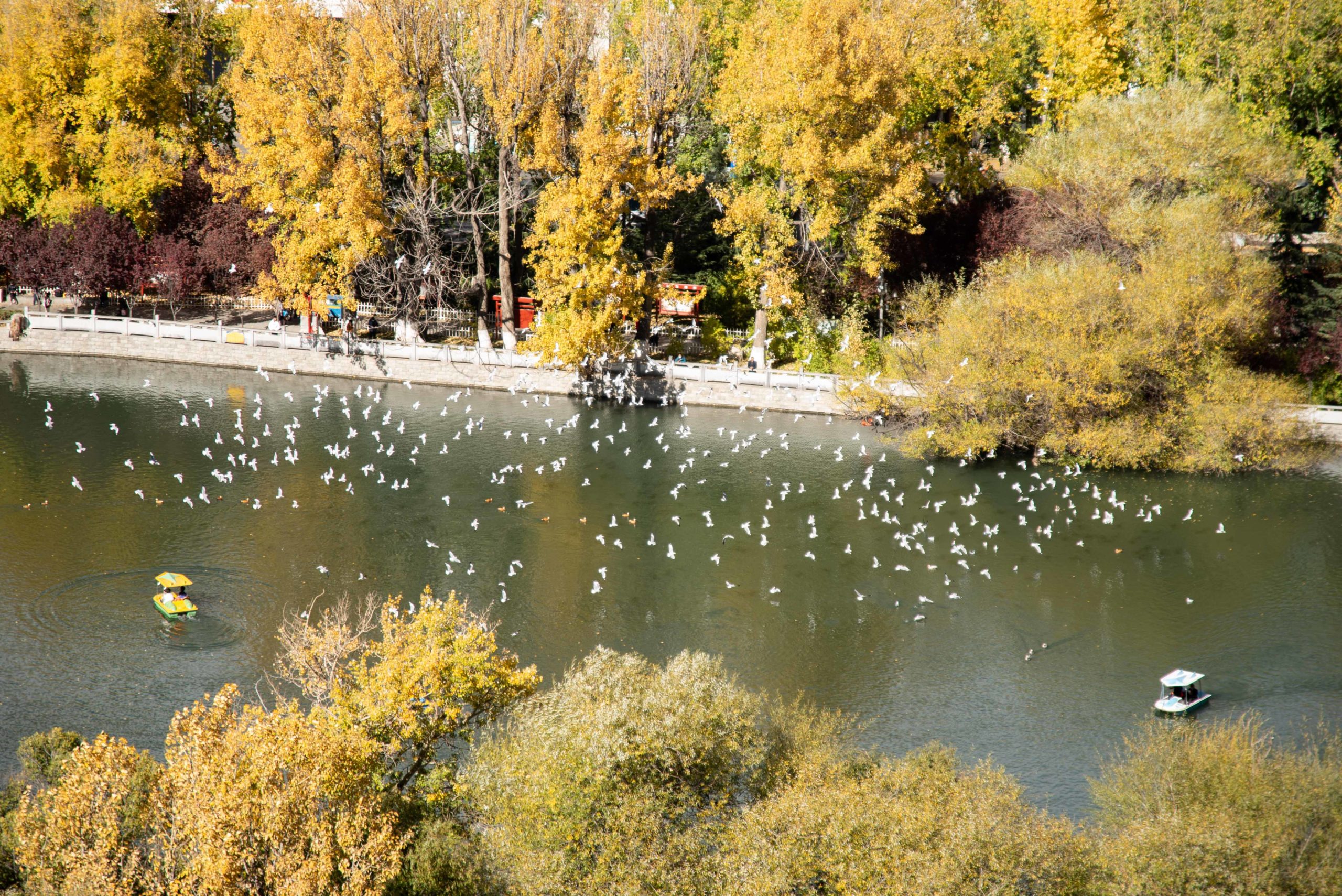
Hi Akie, your post is just amazing. I’m looking forward to visit Lhasa and I was trying to understand more about the city and culture, you have killed it for me. I really loved your story and experiences. You have described it in detail and I got more excited to go there.
I’d have just one question if you could help me.
I don’t speak Chinese, only English and Portuguese. Do you think would I be limited by the language ?
People around there, do they speak any English ?